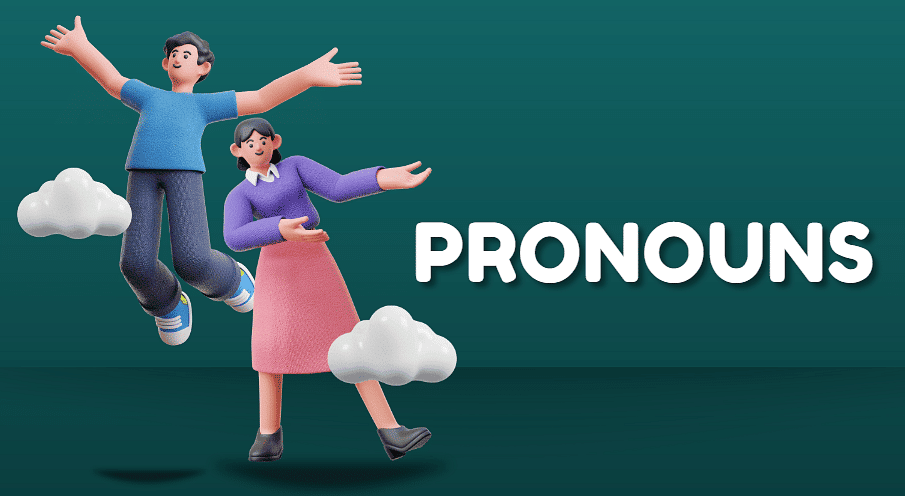Class 1 Exam > Class 1 Notes > English Grammar for Junior Classes > Worksheet: Pronoun - 2
Worksheet: Pronoun - 2 | English Grammar for Junior Classes - Class 1 PDF Download

Q1: Rewrite each sentence. Change the underlined word or words to a pronoun.
(i) Sarah made dinner for the whole family.
(ii) Tyler played tag with Miguel and Ramon.
(iii) Mr. Cane went to the movies with Mrs. Cane.
(iv) The house needs a fresh coat of paint.
Q2: Highlight and underline the pronouns in the sentences below. Some sentences have more than one pronoun.
(i) She went to the store with Angela.
(ii) Six of us had to squeeze in the tiny car.
(iii) Every Thursday, Kenny goes to Wal-Mart with them.
(iv) At the store, the cashier gave her some change.
(v) When the sun comes up, he leaves for work.
(vi) I enjoyed seeing them on the playground.
(vii) Have you hung the painting on the wall yet?
(viii) If I eat all of these vegetables, my mother will let me watch television.
(ix) We played with the puppy, then fed her a biscuit.
(x) Have you seen the sandcastle we built?
(xi) I bounced the ball, and Jack ran after it.
You can access the solutions to this worksheet here.
The document Worksheet: Pronoun - 2 | English Grammar for Junior Classes - Class 1 is a part of the Class 1 Course English Grammar for Junior Classes.
All you need of Class 1 at this link: Class 1
|
18 videos|189 docs|31 tests
|
FAQs on Worksheet: Pronoun - 2 - English Grammar for Junior Classes - Class 1
| 1. What is a pronoun? |  |
Ans. A pronoun is a word that takes the place of a noun in a sentence. It is used to avoid repetition and make sentences less repetitive and more concise.
| 2. What are the different types of pronouns? |  |
Ans. There are several types of pronouns, including personal pronouns (such as I, you, he, she), possessive pronouns (such as mine, yours, his, hers), reflexive pronouns (such as myself, yourself, himself, herself), demonstrative pronouns (such as this, that, these, those), relative pronouns (such as who, whom, whose, which), and indefinite pronouns (such as anyone, someone, everyone, nobody).
| 3. How are pronouns used in sentences? |  |
Ans. Pronouns are used in sentences to replace nouns. They help avoid repetition and make sentences flow better. For example, instead of saying "John went to the store. John bought a book. John paid for the book," we can use pronouns to say "John went to the store. He bought a book. He paid for it."
| 4. What is the importance of using pronouns correctly? |  |
Ans. Using pronouns correctly is important for clear and effective communication. Using the wrong pronoun can cause confusion and misunderstandings. Additionally, using pronouns correctly helps avoid repetition and makes sentences more concise.
| 5. How can I improve my pronoun usage in writing? |  |
Ans. To improve pronoun usage in writing, it is important to understand the different types of pronouns and how they are used. Practice using pronouns correctly in sentences and paragraphs. Additionally, proofread your writing to check for any pronoun errors and make necessary corrections.
Related Searches

















